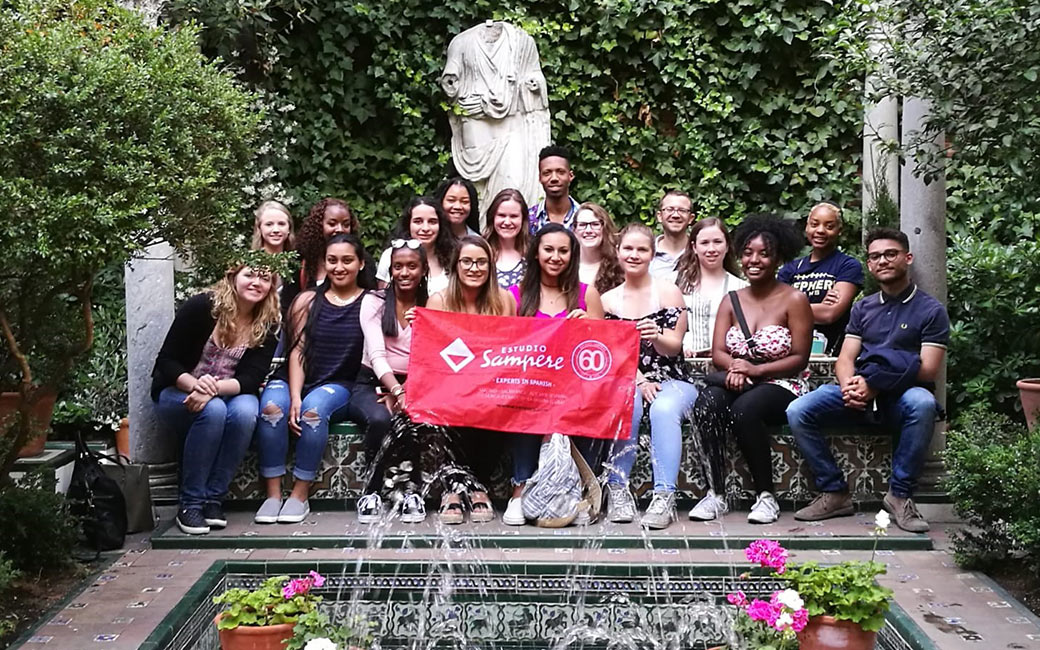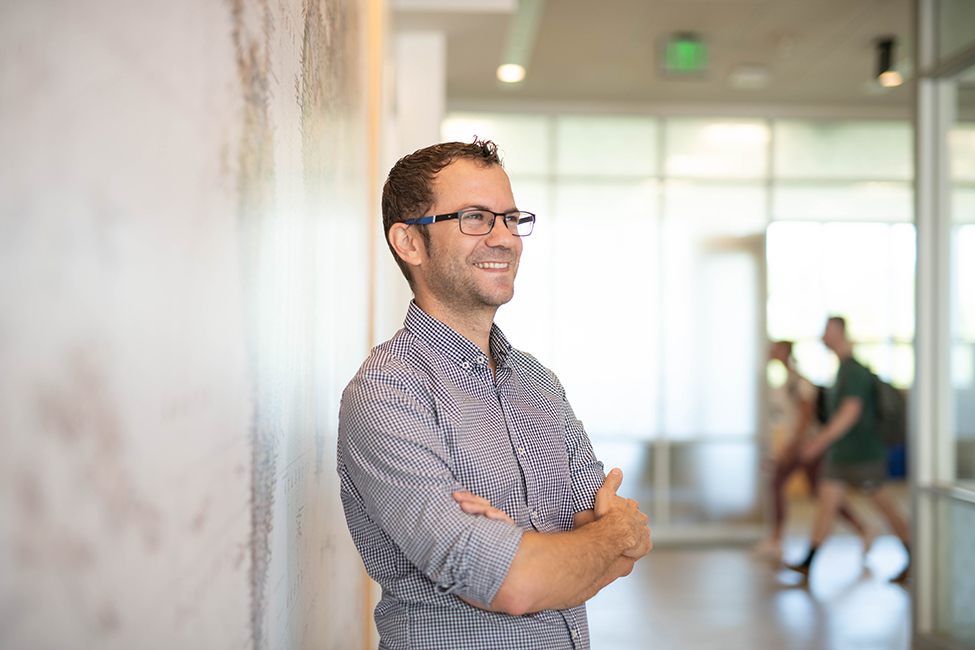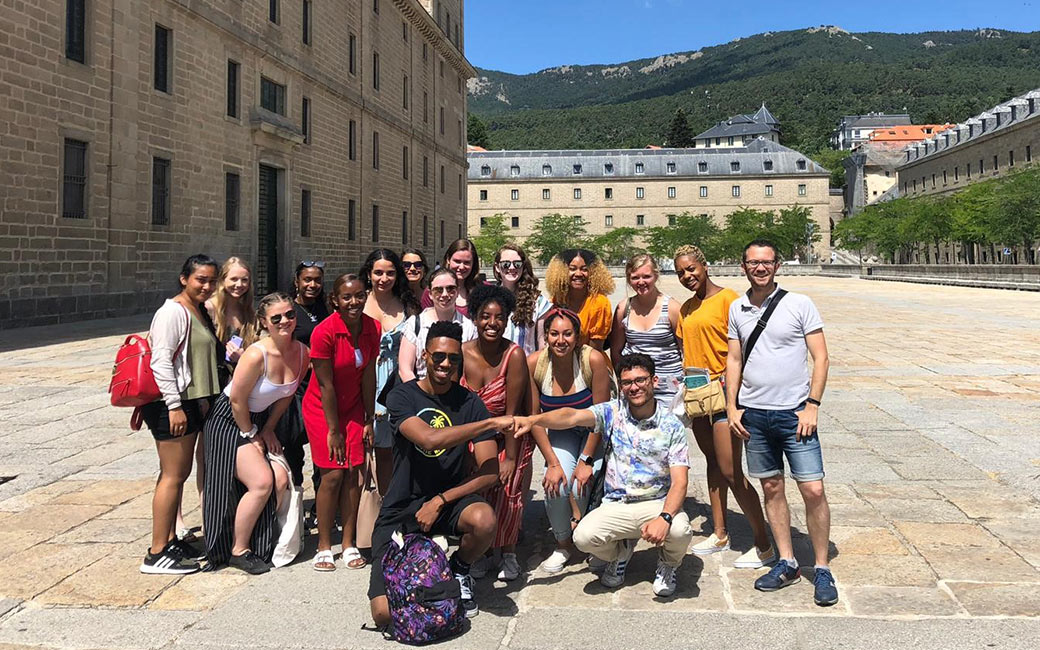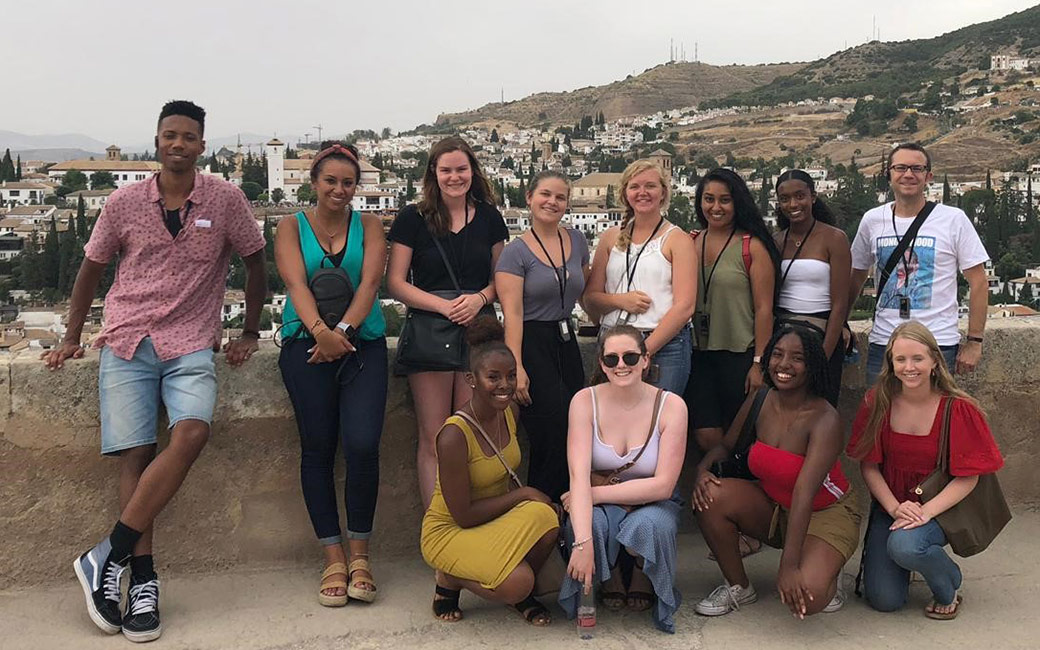
Decoding language
Spanish professor Francisco (Paco) Martínez-Ibarra helps students connect with grammar, linguistics, phonetics and language acquisition.

Learning a new language can be frustrating. But students in Associate Professor Francisco (Paco) Martínez-Ibarra’s Spanish classes have the comfort of knowing that their professor can relate.
Martínez-Ibarra spent his college years at the University of Alicante mastering a second language too — English, which he originally planned to teach in his native Spain. But when a Fulbright scholarship brought him to the United States, Martínez-Ibarra discovered his true calling, “teaching Spanish, my own language.” So he pursued a Ph.D. in Spanish linguistics at SUNY Buffalo.
Now, TU students majoring in foreign languages get to have an understanding instructor and a native speaker sharing his expertise in areas including Spanish grammar, linguistics, phonetics and language acquisition.
“ Learning other languages makes you a more complete person. It gives you additional ways of decoding and interpreting life. ”
A distinguished scholar, Martínez-Ibarra is also an innovative teacher. On the first day of class he asks students to write down two things he should know about them. The tidbits can be anything from struggles balancing school and family to a talent for whistling. For the rest of the semester Martínez-Ibarra has information around which he can build lessons that will engage students and connect them personally with the language.
“It’s very useful,” he says, “because I can plan activities for them so they can use the language in context.”
Beyond the many career options available to bilingual workers, Martínez-Ibarra says learning another language is beneficial for personal growth.
“Learning other languages makes you a more complete person. It gives you additional ways of decoding and interpreting life and society and the world around us.”
And Martínez-Ibarra provides opportunities for students to practice their “decoding” skills by leading TU study abroad trips back in Spain, enriched by his firsthand knowledge of the environment and culture.
“We can teach students language and culture here in the U.S.,” notes Martínez-Ibarra, “but the best way to learn is to go and see it and experience it for themselves.”

